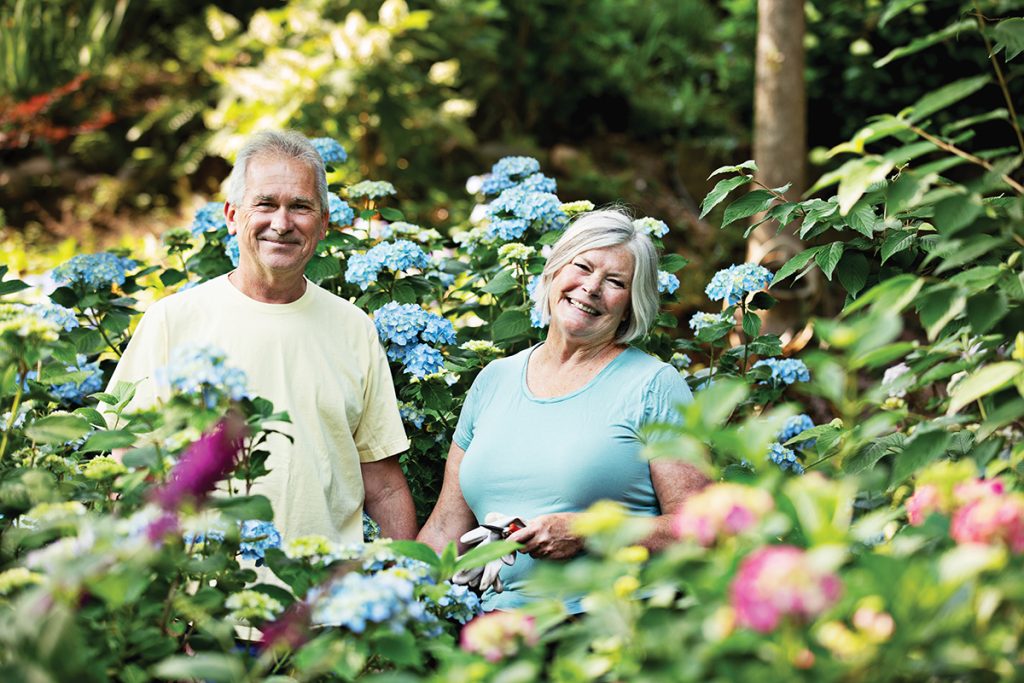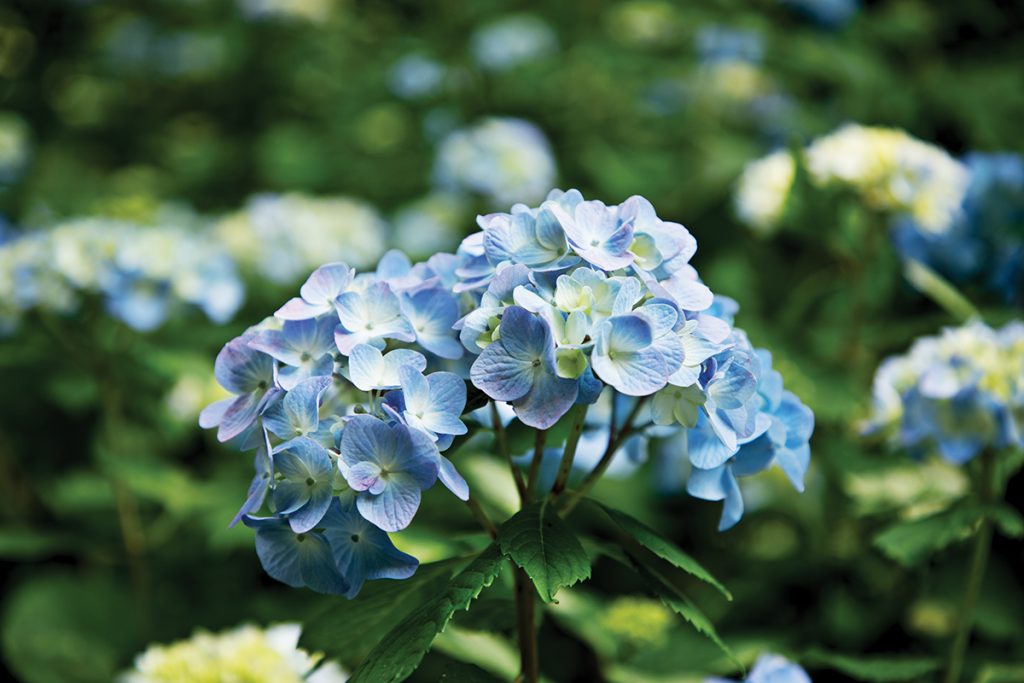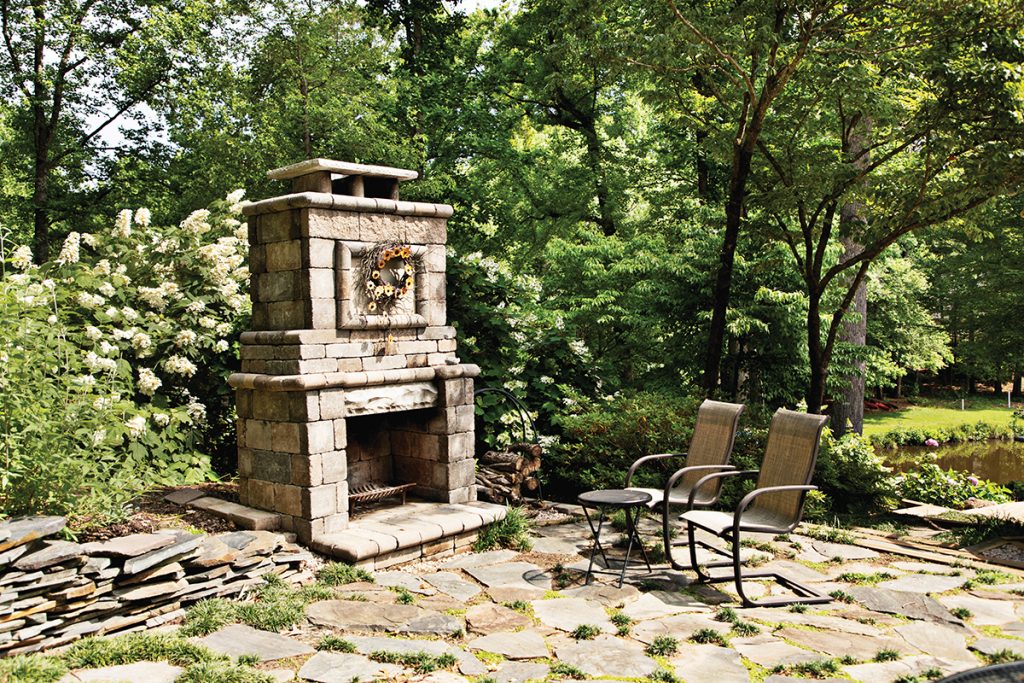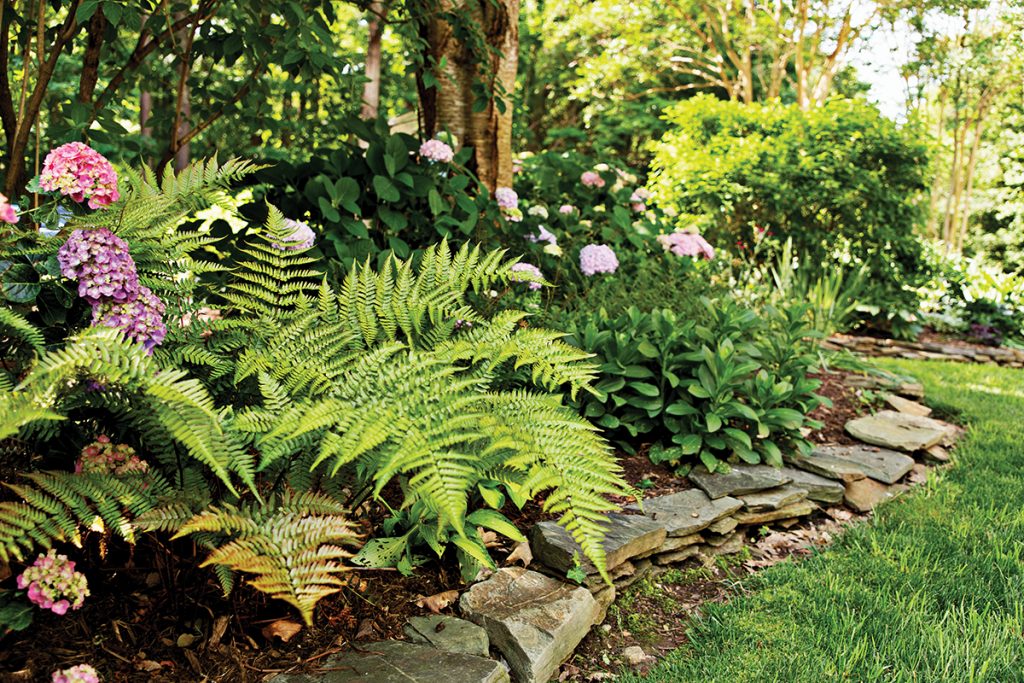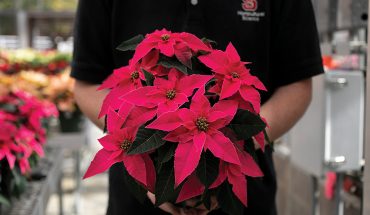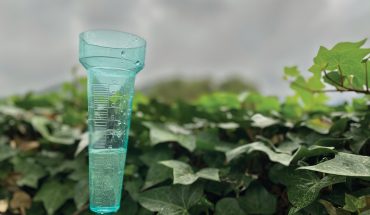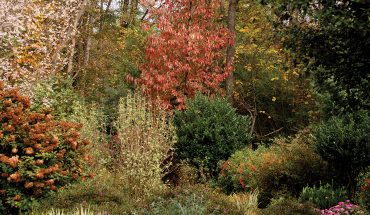Kathy and Michael Flynn have spent two decades cultivating a lush garden along the shores of Valley Lake at Greyson Village.
by Helen Yoest | photography by Juli Leonard
It’s not uncommon to downsize to a smaller home once the kids leave the nest, and that is just what Kathy and Michael Flynn did back in 2005. With one child out of college and the other two rapidly finishing up, they found a new home and garden in Raleigh’s Valley Lakes at Greystone Village, just minutes from where they’d lived for the previous 12 years. “Not needing our bigger home any longer, the timing was right to downsize,” Kathy says.
Their previous home had been a new construction where they’d built out a much-loved garden from scratch, featuring about 20 mature mophead hydrangeas. “That’s where I learned to enjoy filling a vase with flowers fresh from the garden,” Kathy says. “But while I loved working in my old garden, I was excited to have a new project.”
The Flynns moved in the fall, around Thanksgiving, and set about creating a garden they could enjoy but more easily manage as they got older. There were challenges with the new garden: the front yard had spindly grass and a wet, shady-sloping backyard that wouldn’t grow grass for the previous owners. The entire back garden was soggy and covered with knee-high piles of leaves and other debris, and dense foliage obscured the view of Greystone Community Lake.
First, the Flynns chopped up a blanket of leaves and small branches covering the yard, composting them to amend the future beds. “Clearing up the debris created a space where the hardscape and plantings could go,” says Kathy. The next step was opening up the view. “Removing a few huge hickory and sweetgum trees dramatically improved our sightline to the lake,” says Kathy. Over time, they added a slate patio over the soggy ground, plus flagstone-stacked edging around flower beds and a slate-and-timber path to slow the pace down to the lake, doing all the work themselves.
As a start for the garden, Kathy brought along four mophead hydrangeas from their previous home. “I loved their blooms, and the bold textures and feel of hydrangeas. They’re interesting to look at both close up and from a distance,” she says. Those four hydrangeas soon — accidentally — turned into many more. “They fell apart in the move, so Mike separated them to give them their best chance at survival in the new garden,” Kathy remembers. The hydrangeas thrived in their new home.
Over the next decade, the Flynns began propagating or dividing their hydrangeas, spreading them throughout the yard. Today, Michael estimates their hydrangea collection is 170 strong (“I’m not a hoarder, I promise!” chuckles Kathy). The Flynns worked as a team to spread these colorful shrubs throughout their new garden. “I probably planted 100 hydrangeas with Mike doing the rest,” says Kathy. As Mike says, “I enjoy planting with my wife; I know it makes her heart happy.”
The cultivar names of their hydrangeas are long forgotten, but the mopheads, hydrangea macrophylla, are favorites in many Southern gardens. Acidic soil is necessary to keep their mophead hydrangeas blue, so Kathy and Michael have placed Espoma Organic Holly-tone or aluminum sulfate from time to time to alter the colors a bit. “The blue shades are perhaps a favorite. I love gathering coordinating blooms and noticing the many shades of blue that occur in different varieties,” says Kathy.
The Flynns added more to their garden oasis as time and circumstances allowed. A few of the plants they have chosen are a variety of ferns, hellebores, oakleaf hydrangeas, heuchera, echinacea, peony, ajuga and pachysandra, as well as zinnias and a burgundy Japanese maple. “We choose plants to give a variety of textures with little maintenance,” says Kathy.
But even with those other flowers, the hydrangeas are the star. Kathy planted many along the slope down to the lake “to help hold the hill.” It’s a perfect location to receive morning sun and afternoon shade — and to show off for neighbors walking along the grassy trail that encircles the lake. “Each spring, I have walkers tell me they can’t wait for the blooms to begin,” says Kathy.
During the pandemic, the Flynns added a fireplace in their backyard, assembling it from a kit from General Shale Brick & Building Materials. It’s just off-center from the view out the kitchen window, so they can keep an eye on it while preparing meals inside. “We love it,” Kathy says. “On cool afternoons, we’ll start the fire while working in the yard; it’s the perfect place for gathering together or with friends, with our beverage of choice.”
Nearly two decades into their “new” garden, it’s once again easy for Kathy to make arrangements from its bounty. “Hydrangeas work well due to their sturdy stems and long bloom time, and I like to add things like branches from a blueberry bush or ferns,” she says.
And while they moved to the new house to downsize, the yard has proven a welcome spot as their family has grown to include three spouses and eight grandchildren. On Sundays, the family gathers for dinner. “We are fortunate to have a close relationship with our children and grandchildren and they live close by, so we can get together often,” says Kathy.
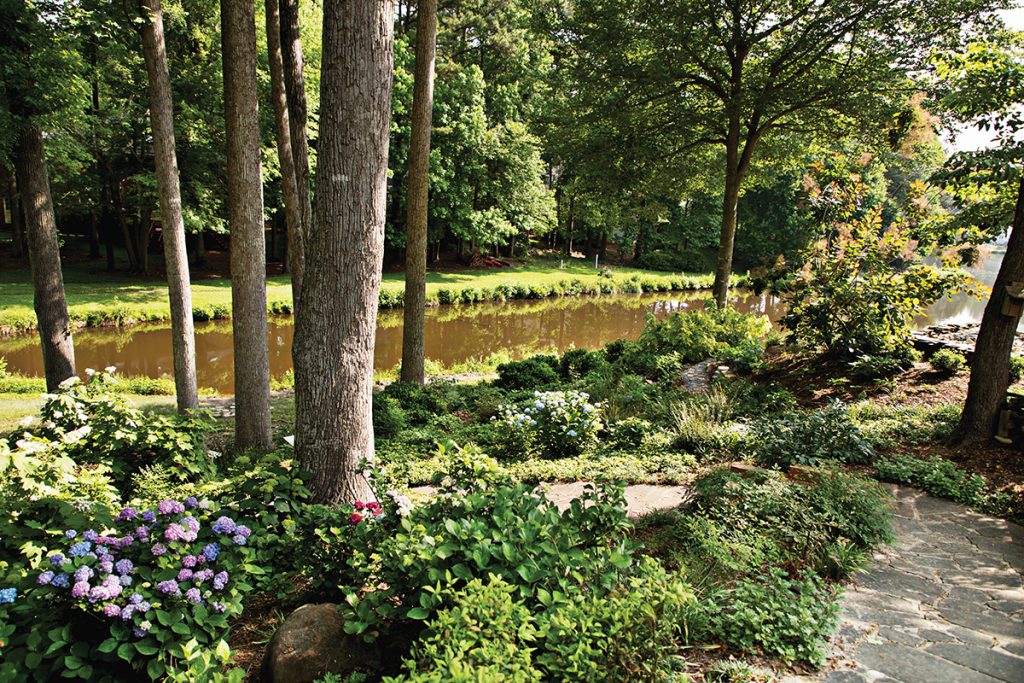
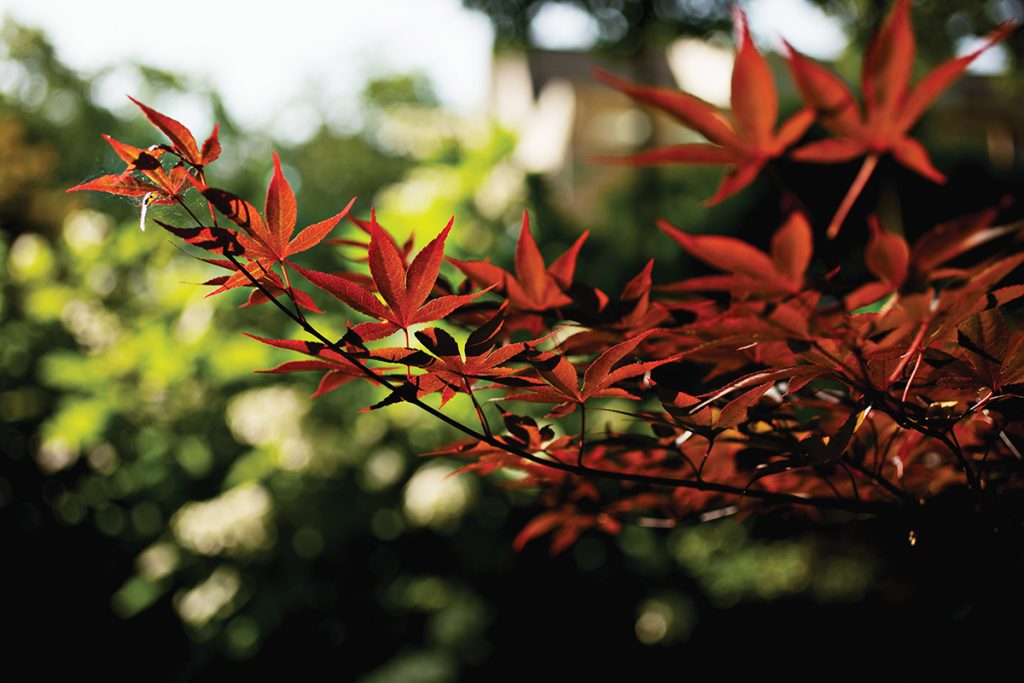
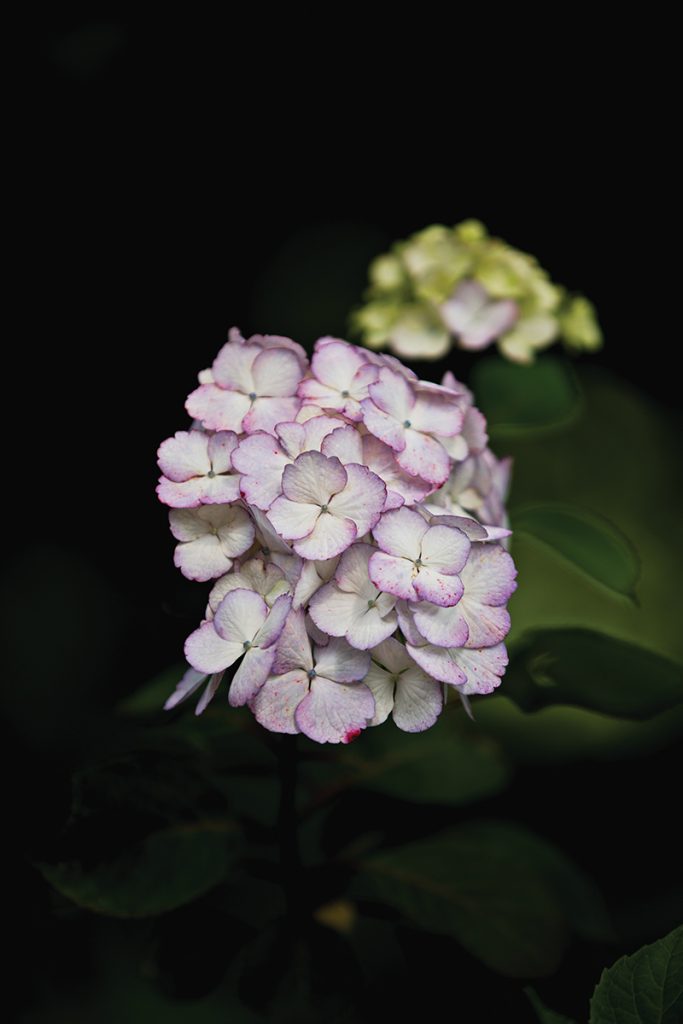
A specimen of Bloodgood Japanese Maple (left); an unusual picotee hydrangea (right)
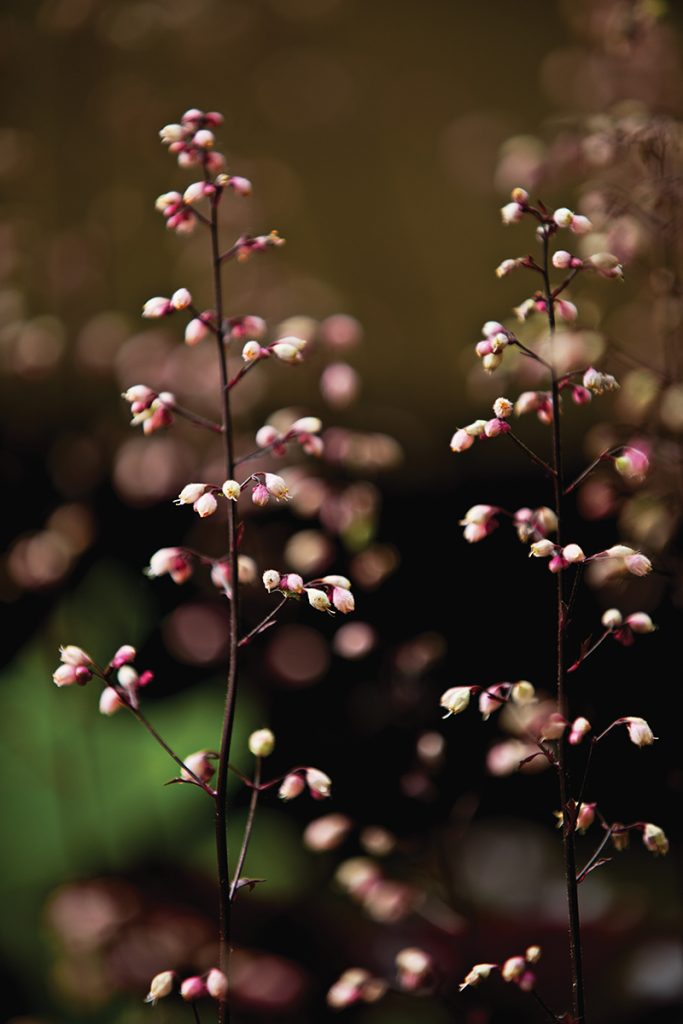
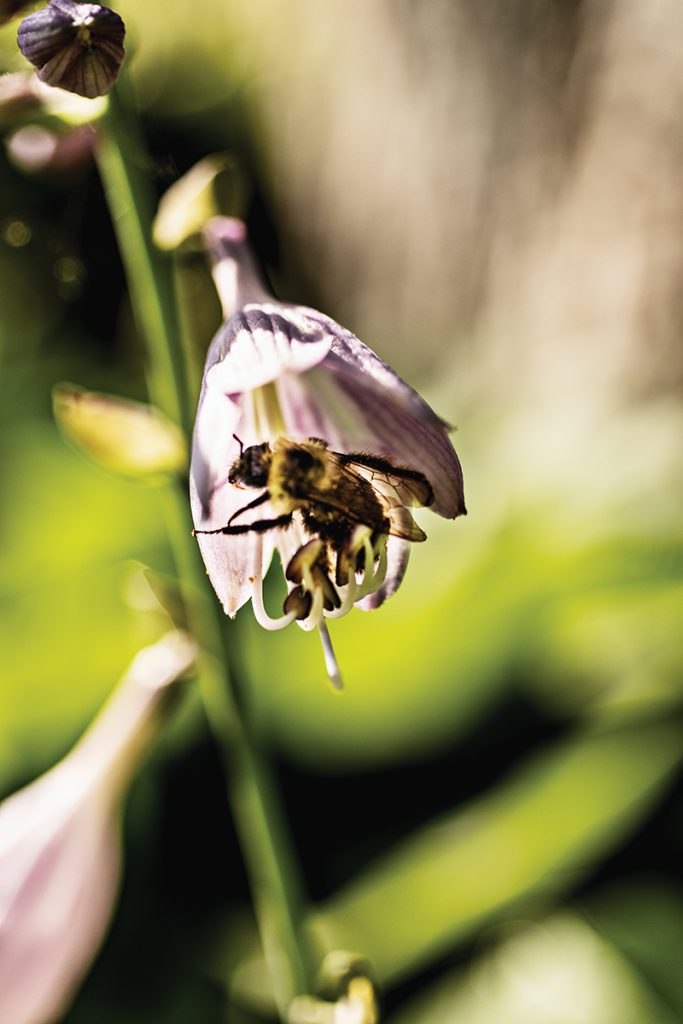
The tiny flowers of the native coral bell perennial (left). A native bee seeks pollen and nectar from a shade-loving hosta (right).
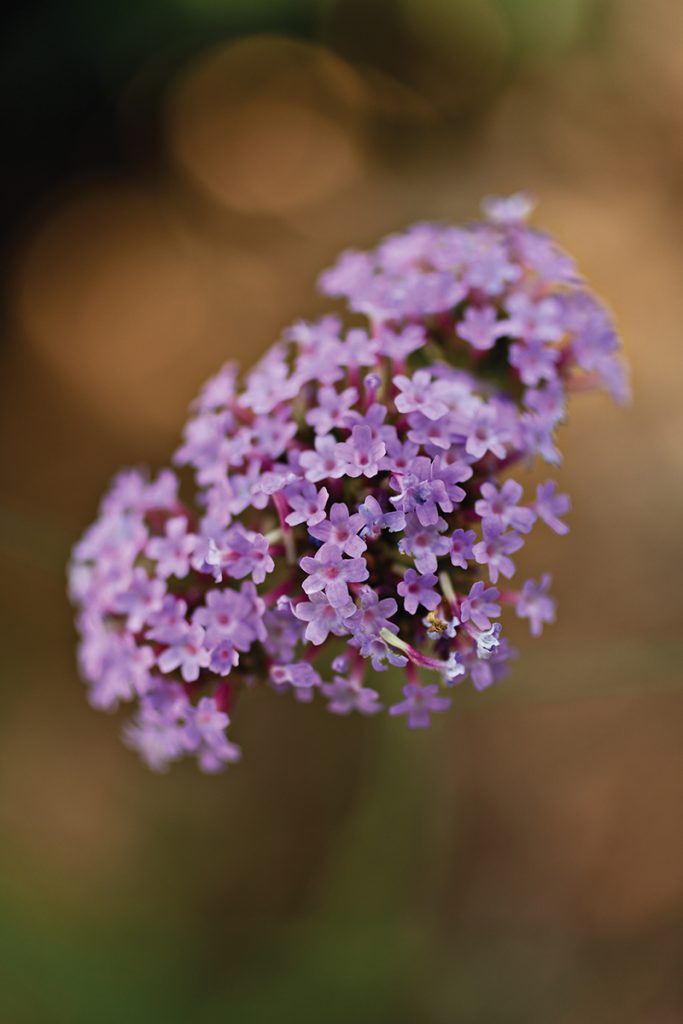
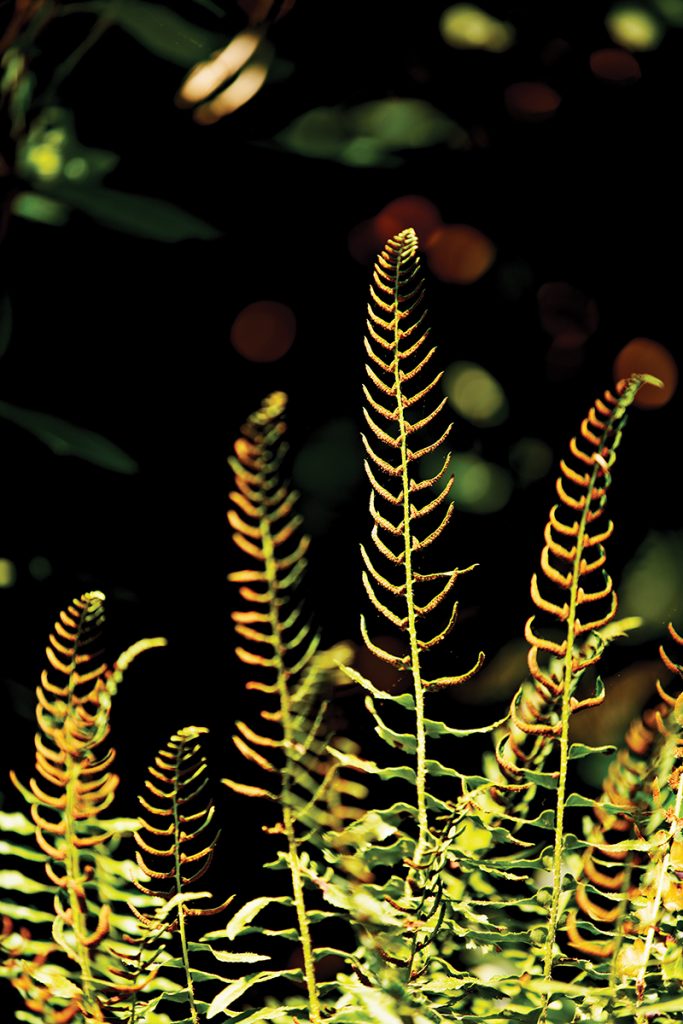
Purpletop vervain is a great pollinator plant for bees and butterflies (left). The Christmas fern (named such since it stays evergreen through the winter) is easy to grow and widely available (right).
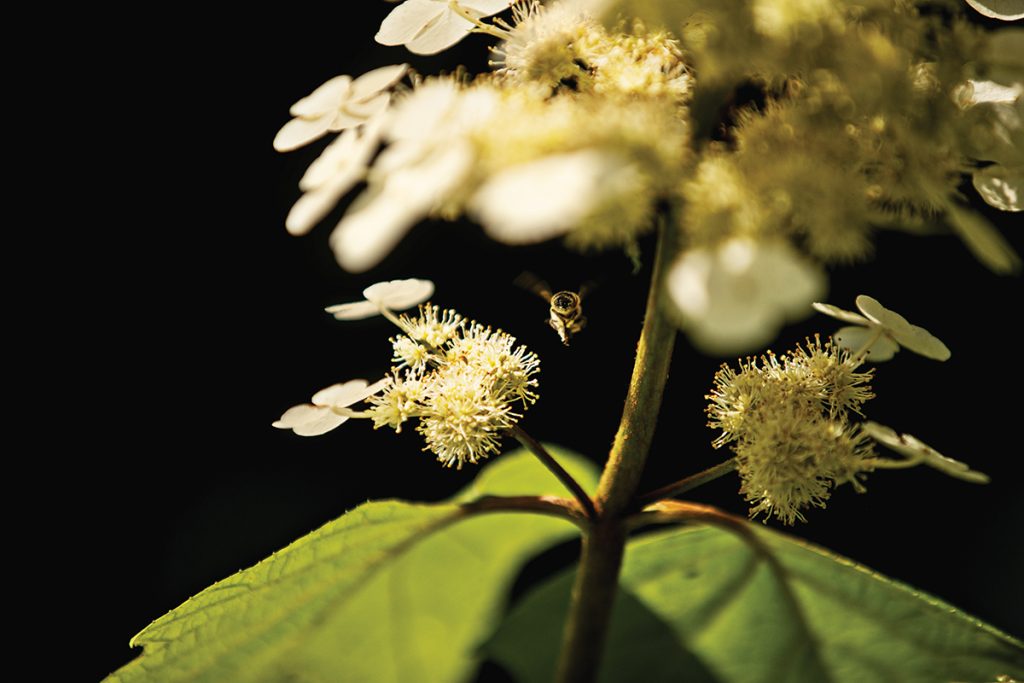
This article originally appeared in the June 2024 issue of WALTER magazine.

